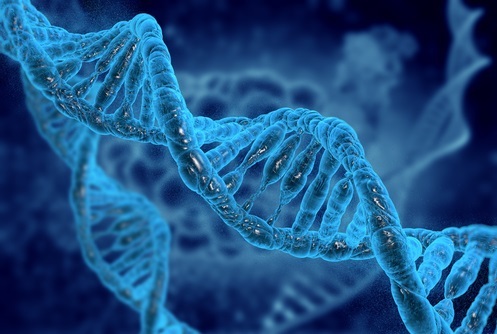
 Data Structure
Data Structure Networking
Networking RDBMS
RDBMS Operating System
Operating System Java
Java MS Excel
MS Excel iOS
iOS HTML
HTML CSS
CSS Android
Android Python
Python C Programming
C Programming C++
C++ C#
C# MongoDB
MongoDB MySQL
MySQL Javascript
Javascript PHP
PHP
- Selected Reading
- UPSC IAS Exams Notes
- Developer's Best Practices
- Questions and Answers
- Effective Resume Writing
- HR Interview Questions
- Computer Glossary
- Who is Who
What is the Difference Between Retrotransposons and DNA Transposons?
Introduction
Transposable elements (TEs) are genetic sequences that can move from one location in the genome to another. They are found in almost all organisms and play a crucial role in shaping the genetic diversity of species. There are two main classes of TEs: retrotransposons and DNA transposons. Despite sharing the same general mechanism of transposition, these two classes of TEs differ in their structure, mechanism of transposition, and evolutionary history.

DNA Transposons
DNA transposons are the simplest type of TEs, consisting of a transposase gene flanked by terminal inverted repeats (TIRs). They typically move by a "cut-and-paste" mechanism, where the transposase enzyme excises the transposon from its original location, and then inserts it into a new site in the genome. This mechanism can create duplications or deletions of genetic material at the target site, depending on the orientation of the TIRs.
DNA transposons are widespread in prokaryotes and eukaryotes. They are often found in clusters and can occupy a significant proportion of the genome in some organisms. For example, in the fruit fly Drosophila melanogaster, DNA transposons account for about 3% of the genome. Some well-known examples of DNA transposons include the Ac/Ds elements in maize, the P elements in Drosophila, and the Sleeping Beauty transposon used in genetic engineering.
Retrotransposons
Retrotransposons, on the other hand, are more complex than DNA transposons and have a more diverse range of structures. They are usually composed of two open reading frames (ORFs) flanked by long terminal repeats (LTRs) or short interspersed nuclear elements (SINEs) and variable-length tandem repeats.
The ORFs encode proteins necessary for the retrotransposition process: a reverse transcriptase, which copies the RNA into DNA, and an integrase, which inserts the DNA copy back into the genome. Retrotransposons move via an RNA intermediate and thus are referred to as "copy-and-paste" elements.
Retrotransposons are abundant in eukaryotic genomes, especially in plants and vertebrates, where they can make up over 40% of the genome. For example, the human genome contains about 48% retrotransposon sequences, most of which are non-functional remnants of ancient transposition events.
Retrotransposons are classified into two major groups: LTR retrotransposons (also known as retroviruses) and non-LTR retrotransposons (such as long interspersed nuclear elements or LINEs, and short interspersed nuclear elements or SINEs). LTR retrotransposons share structural similarities with retroviruses and have been implicated in the evolution of some vertebrate genes.
Differences between Retrotransposons and DNA Transposons
The most fundamental difference between retrotransposons and DNA transposons is their mode of transposition. Retrotransposons move via an RNA intermediate and thus require reverse transcription of their RNA into DNA, whereas DNA transposons move directly as DNA. This difference has several consequences for their transposition mechanisms and evolutionary histories.
For example, retrotransposons can insert themselves anywhere in the genome, including within genes, whereas DNA transposons have a more limited range of target sites. Retrotransposons are also more prone to insertions at sites of DNA damage, such as double-strand breaks, which can lead to chromosomal rearrangements and gene disruptions. In contrast, DNA transposons typically integrate at specific sequences, often causing minimal disruption to the genome.
While both retrotransposons and DNA transposons are mobile genetic elements, they differ in several ways beyond just their mode of transposition. Here are some more detailed differences between the two classes of TEs:
Structure
As mentioned earlier, DNA transposons are usually composed of a single gene encoding the transposase enzyme flanked by terminal inverted repeats (TIRs). In contrast, retrotransposons have a more complex structure that can vary widely depending on the family or lineage of the retrotransposon. LTR retrotransposons contain two LTRs at their ends, which are identical sequences that are often several thousand base pairs long. The ORFs encoding the reverse transcriptase and integrase enzymes are located between the LTRs. Non-LTR retrotransposons, on the other hand, lack LTRs and have a more diverse range of structures, such as LINEs, which have two ORFs flanked by target site duplications, and SINEs, which are shorter and rely on the machinery of other TEs for their mobility.
Mode of Transposition
As mentioned earlier, retrotransposons move via an RNA intermediate, while DNA transposons move directly as DNA. The retrotransposon life cycle starts with transcription of the retrotransposon DNA into RNA by the host cell's RNA polymerase.
The RNA is then reverse-transcribed by the retrotransposon-encoded reverse transcriptase enzyme into a cDNA copy, which is then inserted back into the genome by the retrotransposon-encoded integrase enzyme. In contrast, DNA transposons are excised from their original location as DNA by the transposase enzyme and then inserted into a new site in the genome by the same enzyme.
Conclusion
Retrotransposons and DNA transposons are two classes of transposable elements that differ in several ways beyond their mode of transposition. Retrotransposons have a more complex structure, move via an RNA intermediate, do not have specific target sequences, and are more numerous in eukaryotic genomes.
DNA transposons have a simpler structure, move directly as DNA, have specific target sequences, and are less abundant in genomes. Understanding the differences between these two classes of TEs is crucial for studying genome evolution, gene regulation, and genetic diseases caused by TE insertions. Further research into the biology of TEs will undoubtedly uncover new and exciting insights into the workings of genomes and the evolution of life itself.

